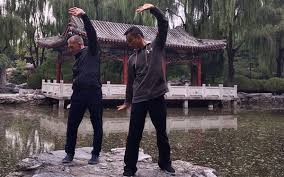The Art and Skill of Modifying Qigong videos
The Art and Skill of Modifying Qigong videos
Qigong is the art and skill of working with the body, breath, mind, and subtle energies to attain health, vitality and longevity. A good Qigong practice is best if it is pleasant, energizing, fulfilling, interesting.
For some people, even the simple moves of basic Qigong can be too much for them. Perhaps because of an injury or chronic problem, they can’t lift a shoulder, or turn an elbow. Or standing up to practice may be overwhelming. Or maybe they are so tired they can’t put much thinking energy, much mental focus on even slightly involved movements. The light exercises that are fairly easy to learn are yet too much to perform. In such cases, self-healing Qigong videos can be modified to even simpler, easier formations. They can still benefit from practicing some qigong videos. Qigong, properly approached will give them gifts of healing so they can get past their pain, tiredness, confusion, recent illness, or recent trauma.
Such a modifying is the main idea behind Super Gentle Qigong. It is a short set that offers movements most anyone can do.
Modifying: Making a movement doable by shrinking it down to just the right size. A movement that is difficult to do because it hurts to do it, there is a physical inability to do it, or it is too complex to understand should be modified. It can be made more gentle, slowed down, made smaller, done with less reach or bend, or generally simplified.
Modifying is a powerful tool of training for several reasons. For one thing, if a move hurts, you don’t gain deep healing benefit from it because you tense up. Modifying it to make it doable without pain promotes the internal relaxation that causes healing. By modifying in this way a person will probably heal some of the hurt and be able to do more as the days and weeks heal by. If a move causes involuntary tension in any way it is best to simplify, slow and smallify it. Tension constricts and restricts. Relaxation conducts and constructs. Doing a movement that hurts a bunch is just enlarging a problem, not healing it. It takes relaxed muscles and connective tissues to open the flows of fluids and electromagnetic energies. To enhance the healing forces, do less to get more.
If a movement is complex beyond a student’s understanding of it, then strenuously attempting it is more an act of willpower than a performance of a healing action in present time. It results more in frustration than delectation. Learning and using qigong videos for self-healing works best if done step-by-step. Add depth over time as each level of ability is attained. Build complexity slowly, if it all. Complexity has color, nuance, verve, beauty. It is fun, when it is built up on a foundation of accrued skill and understanding. It is frustrating and of little benefit when a person starts there.
You can take this practice approach and apply it to many an activity. You do this by altering a movement it until it is usable for wherever you are in your health. It is to be in real time with a clear awareness of your current abilities. Any time you force something you create tension in your body, mind, emotions and spirit. By taking a moment to observe and shift a movement ease-ward, and slowing it down to its essential aspects, you enter into a realm of relaxation.
Don’t go too far, too fast, or too rigorously when your aim is for bodily healing. Drop down into first gear to navigate the bumps in the road. Enjoy the scenery and eliminate the stress of pushing. The very gentle approach brings soothing softness.
If you know of a Qigong set already that is just on the other side of conformable for you to do, then go ahead and modify it to your healthful, relaxed level of expression. Modify each movement by slowing it down, simplify, make it easier and smaller until it doesn’t hurt to do it. This activates and enhances healing forces in your body. You practice will become more enjoyable and be a foundation for rebuilding your health and presence of mind.




Comments
Post a Comment